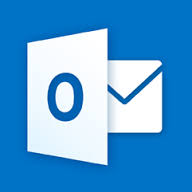
Microsoft released “Outlook” for iOS and Android yesterday (January 29, 2015).
iPhone/iPad/Android and others have traditionally connected to Exchange services via ActiveSync. Depending on the phone/tablet vendor’s implementation, ActiveSync can “sync” email, calendar and other info between the phone/tablet and an Exchange backend. Most phone/tablet “native” apps rely on ActiveSync for their connection to Exchange. This is all well and good but ActiveSync has started to become “creaky” in the past few years as it matures as a technology.
Microsoft has been pushing towards using different technologies to make the connections between phone/tablet and Exchange (specifically Exchange Online in Office 365) in order to overcome the inherent limitations of ActiveSync and make the whole experience “richer” for the end-user. Richer, in this sense means expanded connectivity into other Office 365 related applications such as OneNote. To this end Microsoft released the confusingly-named “OWA” on Android and iOS some time ago. The name is confusing as OWA also refers to the web-connection for Exchange (Outlook Web Access) as well as to other technologies within the Microsoft stack. So, they started calling OWA on Android and iOS “Mobile Outlook Web Access” or MOWA. Got all that?
Anyway, MOWA was an attempt to encapsulate the “full Outlook” experience (like you have on a PC or a Mac) into a single app with the end result being an app that handled email, calendar and contact management in one place. The app works “ok” (I use it on my Galaxy S 4 on a daily basis) but it never gained big penetration numbers. Part of the problem may have been that no one seemed to know that the app existed. Another problem may have been that the performance of the app never matched that of native apps on the devices. My Galaxy S4 is a pretty speedy unit but MOWA is sluggish on it; I can only imagine what it would be like on a lower-powered device. I actually like the app and have learned to live with its performance issues but Microsoft knew that it had to do better.
So, in time honored fashion, Microsoft went out and bought Acompli in order to gain access to their tools and technology. I loaded the Acompli app on my phone when the acquisition was announced and it was definitely snappier than MOWA, in fact it was almost as fast as the native app on my phone. However, I really disliked the interface and there were whacking great chunks missing in terms of “Outlook” functionality. Fast forward to January 29, 2015 and the availability of “Outlook” (iOS) and “Outlook Preview” (Android) . Things have definitely improved although not to the point where I will use the app on Android. The UI has been tidied up and calendar/contact management has been added/improved along with connectivity options to OneDrive and dropbox. The iOS app is definitely ahead of the Android preview app (I found the Android app to be really rough around the edges and the calendar to be close to useless) but both show a lot of promise.
Microsoft has stated, very clearly, that there will be lots of change (read as “improvements”) to the app over the next few months and change will roll out on a weekly basis. Make no mistake, this is going to be the app that Microsoft is going to want you to use on your phone or tablet for your connection to Outlook. Will it supplant the native apps on your phone or tablet? I don’t know, I guess it will be a personal preference unless, of course, Microsoft ends up cutting the cord on ActiveSync and/or makes it “difficult” for native apps to connect (that is wild speculation on my part, by the way).
MOWA is dead at this point although it will hang around as a supported app until all of the requisite Office 365 “goodness” is baked into the Outlook app. When you consider the effort that Microsoft put into MOWA and the fact that it has only really been out for less than a year, its “death” is a pretty stark reminder of how ruthless the marketplace has become and also about how determined Microsoft is to be in “pole position” on whatever your device of choice happens to be. They are doing the same thing with Office in case you hadn’t noticed.
So go ahead and give the Outlook app a try and let Microsoft know what you think of it (they are listening, apparently). I’m going to circle back when they remove the Preview tag on the Android version and I know others that are noodling with it on iOS. It is worth a look if only to see how quickly Microsoft has “flipped” an acquired technology into a production Microsoft application. I’m super interested to see how far they go with this so stay tuned!